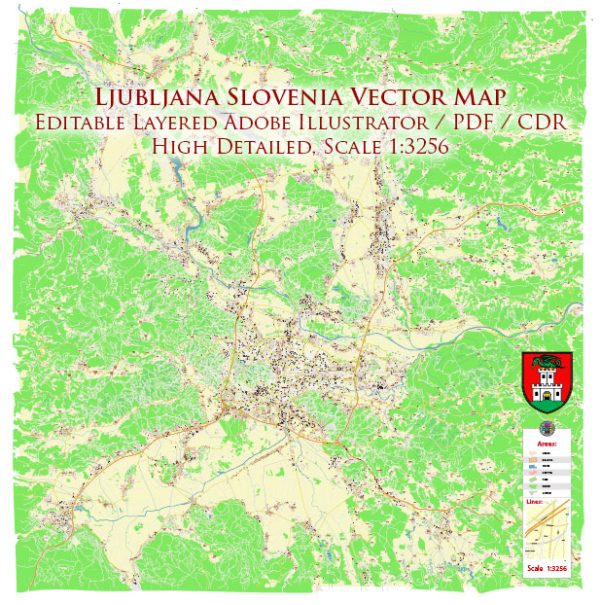Ljubljana, the capital and largest city of Slovenia, has a rich history of urban development that spans centuries. The city’s strategic location at the crossroads of Central Europe and the Mediterranean has played a significant role in shaping its history. Here’s an overview of Ljubljana’s urban development through key historical periods:
- Roman Emona (1st century BC – 5th century AD): The origins of Ljubljana can be traced back to the Roman settlement of Emona, which was established around the 1st century BC. Emona was an important trade and military center, strategically positioned along the Amber Road. The city had a well-developed infrastructure with a forum, temples, baths, and city walls.
- Middle Ages (6th – 14th centuries): After the fall of the Roman Empire, the area was settled by various tribes, including the Slavs. The medieval Ljubljana began to take shape in the 9th century. The Old Town (Stari trg) and the Ljubljana Castle, perched on a hill overlooking the city, played central roles during this period. Ljubljana became part of the Holy Roman Empire, and later, it came under Habsburg rule.
- Renaissance and Baroque Period (15th – 18th centuries): Ljubljana experienced significant development during the Renaissance and Baroque eras. The architecture of the city was influenced by Italian and Austrian styles. The Cathedral of St. Nicholas and notable palaces such as the Kazina and the Kresija Palace were constructed during this time. Ljubljana became an important cultural and economic center.
- Napoleonic and Habsburg Rule (19th century): In the early 19th century, Ljubljana came under Napoleonic rule before being incorporated into the Austrian Empire in 1813. During Habsburg rule, the city underwent modernization, and important infrastructure projects were initiated, including the construction of the first bridge across the Ljubljanica River.
- 20th Century: Ljubljana witnessed significant growth and modernization in the 20th century. After World War I, Ljubljana became part of the Kingdom of Yugoslavia. The city’s development continued under socialist Yugoslavia, with the construction of new residential and industrial areas.
- Post-Independence Period (1991 – Present): Following the breakup of Yugoslavia in 1991, Slovenia declared independence, and Ljubljana became the capital of the newly formed Republic of Slovenia. The city continued to grow economically and culturally. Urban development projects focused on preserving historical landmarks while introducing modern elements. The Pedestrian Zone and the iconic Triple Bridge are examples of recent urban planning initiatives.
Today, Ljubljana is known for its picturesque Old Town, vibrant cultural scene, and a blend of historical and contemporary architecture, showcasing the city’s rich and diverse history of urban development.


 Author: Kirill Shrayber, Ph.D.
Author: Kirill Shrayber, Ph.D.